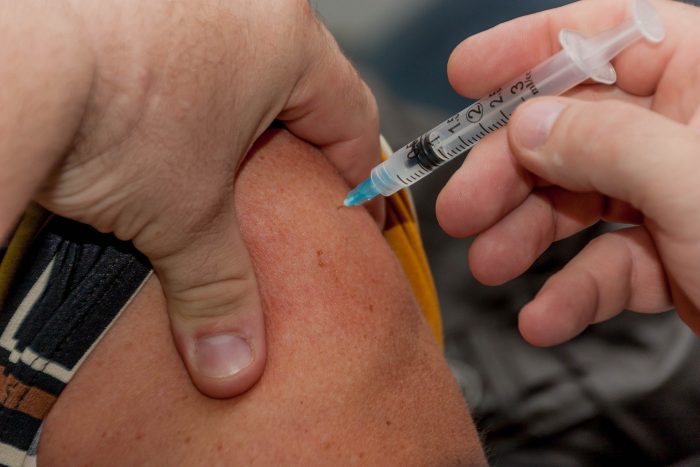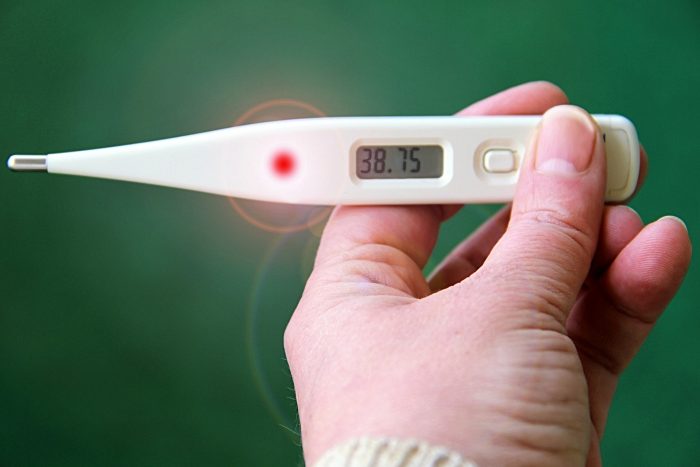Flu has Vanished during the Pandemic but the Common Cold Has Not. Why is this?
Posted by Phil Heler on November 10, 2021The global mortality rate for seasonal flu typically is usually between 290,000–650,000 people a year. However, for 2020 and 2021, it has practically vanished from the face of the earth. Measures taken for COVID-19 such as social distancing and travel restrictions seem to have also significantly attenuated the flu virus as well.
In case anyone has failed to notice, there has been an extensive nationwide advertising campaign to encourage the public to get their flu jabs (and COVID-19 booster) this winter. This campaign was launched on Friday 22nd October and it is the biggest campaign ever run by the government.
The multimedia campaign has involved billboards, it has been broadcast on both national and community radio and on TV. It has been hard to miss the message. The TV advert even runs on primetime slots between evening shows like ‘Emmerdale’, ‘Coronation Street’ and popular daytime shows such as ‘Loose Women’ and ‘This Morning’.
No stone has been left unturned as online video channels such as YouTube have been targeted as well as social media platforms. The campaign TV advert asks people to ‘get vaccinated, get boosted, get protected.’ It features Michelle, an NHS nurse, explaining the benefits of the flu jab and the COVID-19 booster vaccine.
Even our leading pharmacies have joined forces to encourage people to come forward and get their free flu vaccine and COVID-19 booster jab when eligible.
The COVID-19 pandemic has had an unusual and unexpected effect on our seasonal common respiratory diseases. Some of these diseases have significantly decreased, some have persisted, while others are having an unexpected rebound effect off-season.
The global mortality rate for seasonal flu typically is usually between 290,000–650,000 people a year. However, for 2020 and 2021, it has practically vanished from the face of the earth. Measures taken for COVID-19 such as social distancing and travel restrictions seem to have also significantly attenuated the flu virus as well. This suggests of course that flu spreads in a very similar way to COVID-19. The statistics for flu from 2020-21 are quite astounding.
The U.S. recorded only 646 flu deaths in the 2020–21 season — the annual toll for 2017-18 was 52,000 and 22,000 for 2018-19. In the UK there were no reported cases of flu in the seven weeks leading up to the week commencing 22nd February 2021.
Meanwhile in the Southern Hemisphere, whose winter season precedes ours, there have been no seasonal influenza deaths so far in Australia in 2021.
This leaves the World Health Organisation with a problem. Because each year’s flu vaccine is based on strains that have been circulating around the world during the previous year, for this year’s flu vaccine there are few cases to base it on.
It is very uncertain how effective the current flu 2021–22 vaccine will be if typical patterns of flu infections return to their baseline. On the other side of the coin with much less flu virus circulating, and therefore much less viral mutation, hopefully the vaccine formulation should be especially effective.
One thing is certain and that is that this winter’s flu season is highly unpredictable. Yvonne Doyle, medical director at Public Health England, commented early this year with some obvious strap lines which neatly follow party mandates. ‘We will be preparing for a challenging winter by expanding our world-leading flu vaccination programme to over 35 million people, saving more lives and limiting the impact on the NHS and social care.’ While the flu virus has seen a significant decline, this has not been true for the common cold.
Common colds are typically caused by rhinoviruses. Rhinoviruses (RVs) account for about 75% of colds, there are a further six other families of viruses (including common cold coronavirus species) that make up the remaining 25%. Rhinoviruses have continued to spread despite the pandemic, and infection rates have even increased in some countries (obviously these have been flagged by COVID-19 testing).
Initially it would appear that harsh restrictions did indeed lead to an actual decline in the common cold. A study in Southampton undertaken in 2020 demonstrated that common colds caused by RVs remained lower over the summer of 2020 than in summer 2019.
However, the re-opening of schools led to an immediate rapid increase. It can be argued that an increase in detection could be related to COVID-19 testing, but it does prove that the common cold viruses did not decline while other respiratory viruses did.
This is supported by another study from Austria that showed that the lockdown initially reduced the incidence of rhinoviruses, yet as soon as the first restrictions were relaxed, infections returned to their seasonal norms.
Epidemiologists from Japan and China concluded that common colds appeared to spread freely among school-aged children during the restrictions and despite the use of face masks. A recent study published in April 2020 in the online journal ‘Nature Medicine’, suggests that rhinovirus viral transmission, through aerosols and droplets, is not reduced by wearing face masks.
Maybe size does matter! RVs are amongst the smallest of viruses and measure only 30 nanometres (a nanometre is a billionth of a metre and has a prefix nm). By comparison the smallpox virus is 10 times bigger than RVs at 300 nm and the flu virus is 3-4 times bigger at 80-120nm.
It is well known that rhinoviruses, just like COVID-19, can be transmitted by direct contact. The RV virus can survive on our hands and fingers. There is direct evidence that supports that RV colds are transmitted by accidental self-inoculation following inadvertent contamination through surface contact.
It is therefore unusual that hygiene measures such as surface cleaning and hand washing seem to have had little effect on these tiny viruses. It has been speculated that rhinoviruses are perhaps more stable on surfaces allowing greater transmission between children on hands, desks and doorknobs. Asymptomatic transmission of rhinoviruses ( as with COVID-19) is known to be commonplace.
This would allow them to circulate more freely in schools, even when sick children are staying at home. Interestingly rhinovirus viral particles, in terms of their physiology compared to influenza and coronaviruses, do not possess an outer lipid coat or envelope, which is vulnerable to soaps and sanitizers. It is also plausible that rhinoviruses may have proliferated as they have faced little competition from other respiratory viruses.
It would seem that having a cold might not necessarily be such a bad thing in the context of COVID-19. The good news is that a common cold might help to protect people against COVID19. One study published in the happily named ‘Journal of Infection’ suggests that adults who had had cold symptoms within the previous year were less likely to test positive for COVID-19 — although why this is so remains a mystery.
The coronavirus family includes four viruses (229E, NL63, OC43, and HKU1), collectively referred to as common cold coronaviruses. There is a possibility that if these species are in circulation, some immunity could be conferred. It is possible that these CCC infections that cause the common cold could generate immune system cell defences that provide some partial cross-protection against a new coronavirus species.
There are even a few studies that suggest that 25% of the population have antibodies capable of binding to COVID-19 viral particles. A study from December 2020 published in the well-respected journal ‘Science’ showed that antibodies generated from seasonal colds caused by CCC species can neutralize COVID-19 infections, stopping the virus from invading cells. Unfortunately, this study has been contradicted by another investigation published the same year, so it is not a proven concept.
There is also another possibility. It is possible that seasonal colds can interfere directly with COVID-19 by stimulating part of our immune systems (specifically our interferon response) that inhibit viral replication.
An investigation published in the journal ‘Pediatrics’ in November 2020 determined that someone with a rhinovirus infection is 70% less likely to get an infection by any coronavirus species. This suggests that rhinoviruses, due to their rapid viral replication rates, could conceivably outcompete COVID-19.
This is not as unlikely as it seems. There is even some evidence to suggest that the 2009 swine flu (H1N1) pandemic may have been in part interrupted by the annual autumn rhinovirus epidemic. A study published last year in the Lancet did indeed demonstrate in cell cultures at least, that a rhinovirus infection stopped infection from H1N1.



